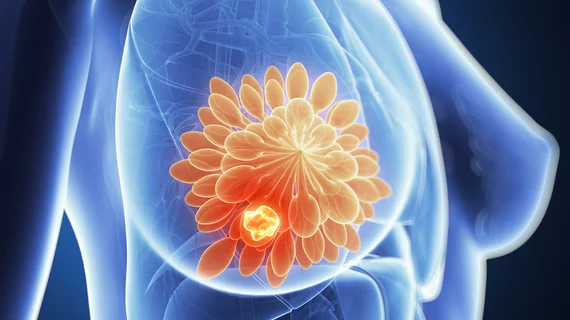Synthetic DBT images reduce radiation dose and eliminate need for digital mammograms, study finds
Canadian researchers have discovered that synthetic two-dimensional digital breast tomosynthesis images can reduce radiation dose while maintaining diagnostic accuracy compared to standard digital mammograms.
That’s according to a new analysis of more than 200,000 patients, published Sept. 23 in the American Journal of Roentgenology. The 2D images reconstructed from a single DBT acquisition were just as accurate as traditional digital mammograms and may be able to replace this legacy technique, the authors wrote in the study.
“These findings support the implementation of synthetic mammography for breast cancer screening and diagnosis in patients receiving DBT, while eliminating the need for digital mammograms in this patient population,” Peri Abdullah, MSc, PhD, with York University’s Department of Kinesiology and Health Sciences, and colleagues wrote.
For their research, Abdullah et al. analyzed medical literature comparing the accuracy of synthetic mammography and conventional digital mammograms, with and without using DBT. In total, 13 studies including 201,304 patients were compared.
The group found no notable difference in specificity and sensitivity between DM and SM. That held true regardless of if each was used independently or combined with DBT.
“Since no significant difference in diagnostic accuracy between SM and DM was found, our study supports the implementation of DBT with the adoption of SM in place of DM,” the authors added.
While 2D mammography remains an important tool in mammography—providing an overview of breast tissue pattern and enhancing findings such as microcalcifications—Reni S. Butler, MD, with Yale School of Medicine’s Department of Radiology and Biomedical Imaging, noted that one image acquisition is ideal
“This study supports [the] utilization of digital breast tomosynthesis as a single acquisition-examination, without a second radiation exposure to obtain a conventional 2D digital mammogram,” Butler wrote in an editorial comment.
Read the entire study in AJR here.

